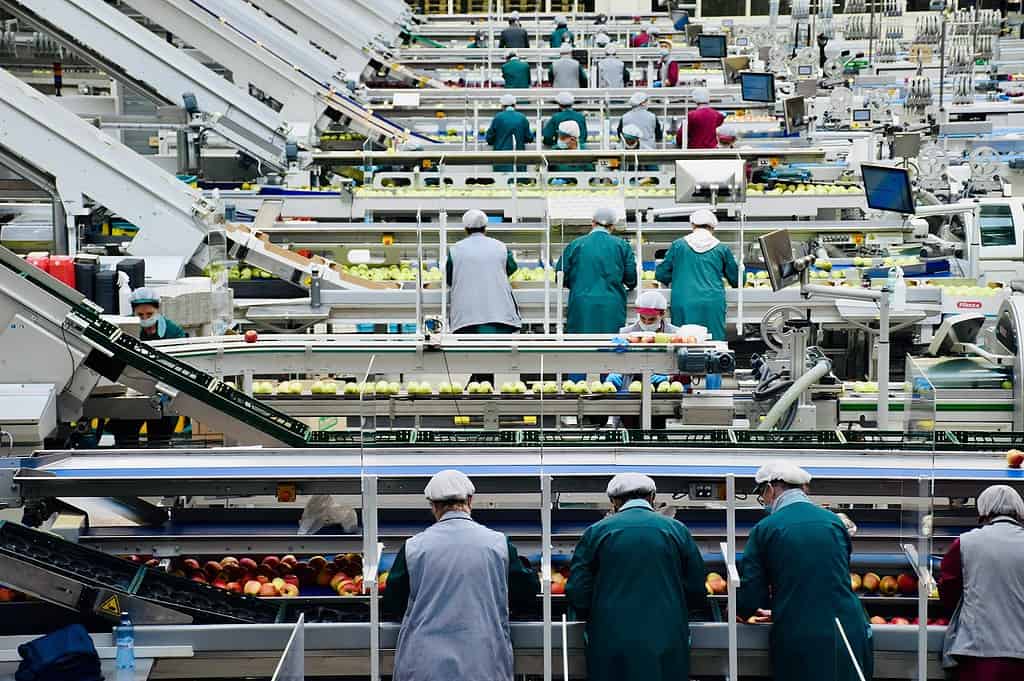Food Safety Management Systems: Importance and Implementation
As a food industry professional, I understand the importance of maintaining high standards of food safety. One way to achieve this is by implementing a Food Safety Management System (FSMS).
An FSMS is a set of policies, procedures and practices designed to ensure that food products are safe for consumption. It involves identifying potential hazards in the food production process and implementing controls to prevent or minimize their occurrence. By doing so, it helps to reduce the risk of foodborne illness and protect public health.
Implementing an FSMS can be a complex process, but it is essential for any organization that handles food. Not only does it help to ensure compliance with regulatory requirements, but it also demonstrates a commitment to food safety and quality. In this article, I will explore the key components of an FSMS and provide insights into how organizations can develop and implement an effective system.
Overview of Food Safety Management Systems
As a food safety expert, I have come across many different types of food safety management systems (FSMS). An FSMS is a set of procedures that food business operators use to ensure that their products are safe for consumption, of the required quality, and legally compliant. The main goal of an FSMS is to prevent food safety hazards from causing adverse health effects on consumers.
An effective FSMS should be based on the principles of Hazard Analysis and Critical Control Points (HACCP). This means that it should identify potential hazards in the food production process and implement measures to control them. The FSMS should also be designed to meet international standards and regulations, such as ISO 22000 and the Food Safety Act in the UK or Food Safety Modernization Act in the USA.
There are several key components of an FSMS that are essential for ensuring food safety. These include:
- Documentation: An FSMS should have a documented system that outlines the procedures, policies, and processes that are used to manage food safety.
- Training: All employees who work with food should receive training on food safety and the FSMS.
- Monitoring and Verification: An FSMS should have processes in place to monitor and verify that food safety procedures are being followed correctly.
- Corrective Actions: An FSMS should have a system for identifying and correcting any food safety issues that arise.
- Continuous Improvement: An FSMS should be regularly reviewed and updated to ensure that it remains effective and up-to-date with the latest food safety standards and regulations.
Overall, an FSMS is an essential tool for ensuring that food is safe for consumption. By implementing an FSMS, food business operators can demonstrate their commitment to food safety and ensure that their products are of the highest quality.

Quality Management Systems
QMS is a set of policies, processes, and procedures that are used to manage and improve the quality of a product or service. In the food industry, QMS is used to ensure that food products are safe, of high quality, and meet regulatory requirements.
Benefits of QMS
Implementing a QMS in a food production facility can provide a number of benefits, including:
- Improved product quality: A QMS can help identify areas where quality can be improved, leading to better products and higher customer satisfaction.
- Increased efficiency: By streamlining processes and reducing waste, a QMS can help improve efficiency and reduce costs.
- Better regulatory compliance: A QMS can help ensure that a company is meeting regulatory requirements and avoiding costly fines and penalties.
- Enhanced customer satisfaction: By improving product quality and consistency, a QMS can help improve customer satisfaction and loyalty.
- Reduced risk: A QMS can help identify and mitigate risks, reducing the likelihood of product recalls and other quality issues.
In addition to these benefits, implementing a QMS can also help a company stay competitive in the marketplace by improving its reputation for quality and safety. Overall, a QMS is an essential tool for any food production facility looking to improve its quality and safety processes.
Hazard Analysis and Critical Control Points (HACCP)
As a part of the food safety management system, HACCP is a systematic approach to identifying, evaluating and controlling food safety hazards. It is based on seven principles that help to ensure food safety at every stage of the production process.
Principles of HACCP
- Conduct a hazard analysis: This involves identifying and assessing potential food safety hazards at every stage of the production process. Hazards can be biological, chemical or physical.
- Determine the critical control points (CCPs): CCPs are points in the production process where a food safety hazard can be controlled or prevented. Examples include cooking, chilling and packaging.
- Establish critical limits: Critical limits are the maximum or minimum values that must be met to control a food safety hazard at a CCP. For example, the exact value of the minimum cooking temperature for poultry.
- Establish monitoring procedures: Monitoring procedures are put in place to ensure that CCPs are under control. This includes measuring and recording critical limits.
- Establish corrective actions: Corrective actions are taken when a CCP is not under control. This includes identifying the cause of the problem and taking corrective action to prevent it from happening again.
- Establish verification procedures: Verification procedures are put in place to ensure that the HACCP system is working effectively. This includes reviewing records, conducting audits and testing products.
- Establish record-keeping and documentation procedures: Accurate record-keeping and documentation are essential for the effective implementation of HACCP. This includes maintaining records of monitoring, corrective actions and verification procedures.
By following these seven principles, HACCP can help to prevent food safety hazards and ensure that food is safe for consumption. It is important to note, however, that HACCP is just one part of a comprehensive food safety management system and that itself without proper engagement and everyday implementation of the people won’t save your business. Other important components include good manufacturing practices, sanitation procedures and employee training.
ISO 22000
As a food safety management system, ISO 22000 is a globally recognized standard that outlines the requirements for organizations to control food safety hazards and ensure that food is safe for consumption. ISO 22000 is applicable to all organizations regardless of their size or position in the food chain.
Requirements of ISO 22000
ISO 22000 requires organizations to establish, implement, maintain and continually improve a food safety management system that includes the following elements:
- Management Responsibility: This element requires top management to demonstrate their commitment to food safety by establishing a food safety policy, providing adequate resources, and ensuring that the food safety management system meets the requirements of ISO 22000.
- Food Safety Management System Planning: Organizations must plan and develop a food safety management system that identifies food safety hazards, assesses the risks associated with these hazards, and establishes control measures to manage these risks.
- Resource Management: This element requires organizations to provide adequate resources, including personnel, infrastructure and equipment, to ensure the effective implementation of the food safety management system.
- Hazard Analysis: Organizations must conduct a hazard analysis to identify and evaluate potential hazards that could affect the safety of food products.
- Operational Planning and Control: Organizations must establish operational controls to ensure that food safety hazards are managed effectively at each stage of the food chain.
- Prerequisite Programs: This element requires organizations to establish and implement prerequisite programs that provide a foundation for the food safety management system.
- Traceability System: Organizations must establish a traceability system that enables the identification of the source of raw materials and the destination of finished products.
- Verification, Validation and Improvement of the Food Safety Management System: Organizations must establish a system for verifying, validating and continually improving the food safety management system to ensure that it remains effective and up-to-date.
ISO 22000 is a comprehensive food safety management system that provides a framework for organizations to manage food safety hazards and ensure that food is safe for consumption. By implementing ISO 22000, organizations can demonstrate their commitment to food safety and improve their reputation in the marketplace.
Safe Quality Food (SQF)
As someone who is passionate about food safety, I believe that Safe Quality Food (SQF) is an excellent program to implement in any food business. SQF is a Global Food Safety Initiative (GFSI) benchmarked food safety standard based on Hazard Analysis Critical Control Points (HACCP). It is a comprehensive certification system that addresses food safety and quality management in all stages of the food supply chain, from primary production through to food manufacturing, distribution, food packaging, and retail.
Benefits of SQF
One of the main benefits of the SQF program is that it is recognized by retailers, brand owners, and food service providers worldwide. This means that if you are SQF certified, you will have a competitive advantage over businesses that are not certified. Additionally, SQF certification can help you to reduce the risk of food safety incidents, which can lead to costly recalls and damage to your reputation.
SQF certification can also help you to improve your food safety and quality management systems. By implementing the SQF program, you will be required to establish and maintain a comprehensive food safety management system that meets the requirements of the SQF Code. This will help you to identify and manage food safety risks, as well as to continuously improve your processes and procedures.
Another benefit of the SQF program is that it can help you to comply with food safety regulations. SQF certification is recognized by many regulatory bodies, including the U.S. Food and Drug Administration (FDA). By implementing the SQF program, you can demonstrate to regulators that you are taking a proactive approach to food safety, which can help you to avoid regulatory action.
Overall, I believe that the SQF program is an excellent choice for any food business that is serious about food safety. By implementing the SQF program, you can improve your food safety and quality management systems, reduce the risk of food safety incidents, and demonstrate to customers and regulators that you are committed to food safety.
British Retail Consortium (BRC)
As a food safety professional, I have come across the British Retail Consortium (BRC) Global Standard for Food Safety quite frequently. The BRC is a UK trade organization that represents UK retailers and was founded in 1992. The BRC Global Standard for Food Safety was created to establish a standard for due diligence and supplier approval.
BRC Certification
BRC certification is a globally recognized standard for food safety management systems. It is based on the HACCP (Hazard Analysis and Critical Control Points) principles and is designed to ensure that food products are safe, legal and of high quality. The BRC Global Standard for Food Safety was first published in 1998 and has since become one of the most widely recognized food safety standards in the world.
The BRC Global Standard for Food Safety is currently in its 9th edition and has been adopted by over 22,000 sites in more than 130 countries. The standard is accepted by 70% of the top 10 global retailers, 60% of the top 10 quick-service restaurants and 50% of the top 25 manufacturers. The BRC Global Standard for Food Safety has set the benchmark for nearly 25 years and has constantly evolved to meet the changing needs of the food industry.
BRC certification is awarded to companies that meet the requirements of the BRC Global Standard for Food Safety. The certification process involves an audit of the company’s food safety management system by an accredited third-party certification body. The audit covers all aspects of the company’s food safety management system, including HACCP, quality management and risk assessment.
The BRC Global Standard for Food Safety is a globally recognized standard for food safety management systems. BRC certification is awarded to companies that meet the requirements of the standard and is a mark of quality and safety in the food industry.
Global Food Safety Initiative (GFSI)
GFSI is a non-profit industry-driven initiative that aims to continuously improve food safety management systems to ensure the delivery of safe food to consumers worldwide. The initiative provides a platform for collaboration between leading food safety experts from retail, manufacturing and food service companies.
Benefits of GFSI
GFSI has several benefits for stakeholders in the food industry. For instance, it helps companies to establish and maintain robust food safety management systems that meet internationally recognized standards. These standards include Hazard Analysis and Critical Control Points (HACCP), International Featured Standards (IFS), Food Safety System Certification (FSSC) 22000 and British Retail Consortium (BRC) Global Standards.
GFSI also provides a benchmarking process that enables food safety certification programs to be recognized globally. This reduces the need for multiple audits and certifications, which can be costly and time-consuming for companies. Instead, companies can rely on a single certification that is recognized by GFSI.
Another benefit of GFSI is that it promotes transparency and trust in the food industry. Consumers can have confidence in the safety and quality of the food they purchase because GFSI-certified companies have met rigorous food safety standards.
Overall, GFSI plays a critical role in ensuring the safety of the global food supply chain. By establishing internationally recognized food safety standards and providing a platform for collaboration among food safety experts, GFSI helps to prevent foodborne illnesses and promote public health.
Total Quality Management (TQM)
As a food safety professional, I have found that implementing a Total Quality Management (TQM) system is an effective way to ensure that food safety standards are met consistently. TQM is an approach that emphasizes continuous improvement in all aspects of an organization’s operations. It is a comprehensive management system that involves all employees in the organization and focuses on meeting the needs of customers.
TQM Principles
TQM is based on several principles, including:
- Customer Focus: The customer is the most important part of the organization and all efforts should be directed toward meeting their needs.
- Continuous Improvement: Continuous improvement is essential for an organization to remain competitive. This involves setting goals, measuring progress and making changes to improve performance.
- Employee Involvement: All employees should be involved in the TQM process. This means that they should be trained in TQM principles, and given the opportunity to provide input on how to improve operations.
- Process Approach: TQM is a process-based approach, which means that it focuses on improving processes rather than fixing problems. This involves identifying and analyzing processes and making changes to improve their efficiency and effectiveness.
- System Approach: TQM is a system-based approach, which means that it involves all aspects of an organization’s operations. This includes the processes, people, equipment and technology used in the organization.
- Leadership: Leadership is essential for the successful implementation of TQM. Leaders should provide direction, set goals and create a culture of continuous improvement.
In the context of food safety management, TQM can be used to ensure that all aspects of an organization’s operations are focused on meeting food safety standards. This involves implementing processes to identify and control hazards, training employees in food safety principles and continuously monitoring and improving performance. By implementing a TQM system, organizations can ensure that they are meeting the needs of their customers, while also ensuring the safety and quality of their products.
Implementation of Food Safety Management Systems
As a food safety expert, I have helped many organizations implement Food Safety Management Systems (FSMS). FSMS is a proactive approach to managing food safety risks and ensuring that food is safe for consumption. Here are the steps to implement FSMS:
Steps to Implement FSMS
1. Establish a Food Safety Team
The first step in implementing FSMS is to establish a food safety team that will be responsible for developing and implementing the system. The team should include individuals from different departments, such as production, quality control and management.
2. Conduct a Hazard Analysis
The food safety team should conduct a hazard analysis to identify potential hazards that could affect the safety of the food. The team should use a systematic approach, such as Hazard Analysis and Critical Control Points (HACCP), to identify and evaluate hazards.
3. Develop and Implement Control Measures
Based on the hazard analysis, the food safety team should develop and implement control measures to prevent, eliminate or reduce the hazards to an acceptable level. The control measures should be documented and monitored regularly to ensure their effectiveness.
4. Establish Monitoring Procedures
The food safety team should establish monitoring procedures to ensure that the control measures are working effectively. The monitoring procedures should be documented and include the frequency and method of monitoring.
5. Implement Corrective Actions
If a hazard is identified during monitoring, the food safety team should implement corrective actions to address the hazard and prevent it from recurring. The corrective actions should be documented and monitored to ensure their effectiveness.
6. Establish Verification Procedures
The food safety team should establish verification procedures to ensure that the FSMS is working effectively. The verification procedures should include periodic reviews of the system and testing of the control measures.
7. Train Employees
All employees should be trained on the FSMS and their roles and responsibilities in ensuring food safety. The training should be documented and employees should be trained regularly to ensure that they are aware of any changes to the system.
By following these steps, organizations can implement an effective FSMS that will help them manage food safety risks and ensure that food is safe for consumption.
Benefits of Food Safety Management Systems
As a food safety professional, I have seen firsthand the benefits that a robust Food Safety Management System (FSMS) can bring to an organization. FSMS is a systematic approach to controlling food hazards and ensuring food quality throughout the food chain. Here are some of the benefits of implementing an FSMS:
Business Benefits
Implementing an FSMS can bring significant benefits to a business, including:
- Reduced risk of food recalls: An FSMS can help identify potential food safety hazards and take corrective action before they become an issue, reducing the risk of food recalls.
- Improved compliance with regulations: An FSMS can help ensure that a business meets all relevant food safety regulations and standards, reducing the risk of non-compliance and potential legal action.
- Increased efficiency: An FSMS can streamline food safety processes, reducing the time and effort required to manage food safety risks and freeing up resources for other business activities.
- Improved reputation: An FSMS can help demonstrate a business’s commitment to food safety, improving its reputation with customers, suppliers and regulators.
Consumer Benefits
Implementing an FSMS can also bring significant benefits to consumers, including:
- Reduced risk of foodborne illness: An FSMS can help identify and control potential food safety hazards, reducing the risk of foodborne illness for consumers.
- Improved product quality: An FSMS can help ensure that food products are of consistent quality, reducing the risk of consumer complaints and returns.
- Increased transparency: An FSMS can provide consumers with information about a business’s food safety practices, increasing transparency and building trust.
In summary, implementing an FSMS can bring significant benefits to both businesses and consumers. By reducing the risk of food recalls and non-compliance, improving efficiency and reputation, and reducing the risk of foodborne illness and improving product quality and transparency, an FSMS can help businesses to succeed while also protecting the health and safety of consumers.
Challenges in Implementing Food Safety Management Systems
Implementing a Food Safety Management System (FSMS) can be a challenging task for food processors. Although FSMSs are crucial to ensure food safety, there are several common challenges that can hinder the implementation process. In this section, I will discuss some of these challenges.
Common Challenges
Lack of Prerequisite Programs
One of the most common challenges in implementing FSMSs is the lack of prerequisite programs. According to a study, 92.2% of respondents ranked this as the top barrier to implementing FSMSs. Prerequisite programs are the foundation of FSMSs, and they include activities such as cleaning and sanitation, pest control and employee training. Without these programs in place, it is difficult to ensure food safety.
Lack of Resources
Another common challenge is the lack of resources, including time, money and personnel. Implementing FSMSs requires significant investment, and many food processors may not have the necessary resources to do so. This can lead to a lack of commitment to the implementation process, which can compromise food safety.
Resistance to Change
Implementing FSMSs often requires significant changes in the way food processors operate. This can lead to resistance to change, which can hinder the implementation process. Resistance to change can come from employees, management, or even customers who are used to the old way of doing things.
Complexity of FSMSs
FSMSs can be complex and implementing them can be a daunting task. The complexity of FSMSs can lead to confusion and frustration, which can hinder the implementation process. To overcome this challenge, it is essential to have a clear understanding of the requirements and to ensure that everyone involved in the implementation process is properly trained.
Lack of Knowledge and Expertise
Implementing FSMSs requires a significant amount of knowledge and expertise. Many food processors may not have the necessary knowledge or expertise to implement FSMSs effectively. This can lead to mistakes and compromises in food safety.
In conclusion, implementing FSMSs can be a challenging task for food processors. Common challenges include the lack of prerequisite programs, lack of resources, resistance to change, complexity of FSMSs, and lack of knowledge and expertise. To overcome these challenges, it is essential to have a clear understanding of the requirements, proper training, and a commitment to food safety.
Conclusion
In conclusion, I have learned that implementing a food safety management system is crucial for ensuring safe food for consumers. The system should be based on science and should involve the use of appropriate technology to ensure the safety of traditional foods. The system should also consider the impact of foodborne illnesses on regulatory requirements.
To achieve a science-based system, the current statutes governing food safety regulation and management must be revised. This will require the reorganization of federal food safety efforts to ensure that they are efficient and effective. The implementation of Hazard Analysis and Critical Control Points (HACCP) and Good Manufacturing Practices (GMP), as part of food safety management systems, is also important to reduce the risk of food contamination.
Hygiene, prevention and risk reduction, reliability, consistency, traceability, customer and consumer relevance, and transparency and accountability are the driving principles for food safety and quality management systems. These principles should be operationalized through various management systems, some of which include ISO 22000, FSSC 22000, and BRCGS.
In summary, food safety management systems are essential for ensuring the safety and quality of food products. The implementation of these systems requires the revision of current regulatory statutes, the reorganization of federal food safety efforts, and the use of appropriate technology. The principles of hygiene, prevention and risk reduction, among others, should be used to guide the implementation of these systems.







